Q
How much is a Honda City hatchback in 2021?
When the 2021 Honda City Hatchback launched locally, it came in two variants: the 1.5L S and 1.5L V, with starting prices of approximately RM75,000 and RM82,000 respectively. Exact pricing could vary depending on optional accessories or promotional offers. Powering this model is a 1.5-liter i-VTEC engine paired with a CVT transmission, focusing on fuel efficiency and practical space. Its hatchback design makes it more suitable for urban driving and cargo needs compared to the traditional sedan version. Key competitors in its class include the Toyota Yaris and Nissan Almera, but the City Hatchback stands out with Honda's Honda Sensing safety suite and the flexible Magic Seat design for the rear row. It's worth noting that used car market prices are influenced by vehicle condition, mileage, and remaining warranty period. Before purchasing, it's advisable to get the latest quotes through official channels and compare after-sales packages from different dealers, such as the number of free maintenance services or extended warranty coverage—these add-ons can impact the overall cost of ownership.
Special Disclaimer: This content is published by users and does not represent the views or position of PCauto.
Related Q&A
Q
How much is a Honda 2021 worth?
The current value of a 2021 Honda depends on factors like the specific model, mileage, condition, and equipment. Take popular models like the City or CR-V – used prices typically range from RM60,000 to RM140,000. Low-mileage, well-maintained high-spec versions will be closer to the upper end. For an accurate valuation, check recent transaction records on local used car platforms or use professional valuation tools by inputting detailed vehicle info for a report. It's worth noting that Hondas hold their value well in the used market, especially hybrid versions, thanks to their reliable powertrains and low maintenance costs. Also, when buying a used Honda, focus on checking the CVT transmission condition and engine service records, and see if the original factory warranty is still valid – these factors significantly impact residual value. For owners considering upgrading, doing a full service and keeping the receipts before selling can help boost the transaction price.
Q
What is the most sold vehicle in 2023?
The world's best-selling vehicle in 2023 was the Toyota RAV4. This compact SUV won over drivers worldwide with its solid reliability, practical interior space, and strong fuel efficiency. Malaysia was no exception – Toyota already enjoys a stellar reputation there, and the RAV4 Hybrid specifically appealed to eco-conscious buyers looking to reduce their carbon footprint.
In Malaysia, alongside the RAV4, local car buyers have long favored affordable, tough-as-nails workhorses like the Perodua Myvi and Proton Saga. These two consistently top the sales charts because they’re perfectly suited to Malaysia’s unique road conditions and fit right into local driving habits and budgets.
What’s really interesting though is the growing buzz around electric vehicles (EVs) in Malaysia, thanks to advancing EV tech. Models like the Tesla Model Y and BYD Atto 3 are starting to turn heads. They haven’t quite dethroned traditional petrol-powered cars yet, but their sales numbers are climbing steadily – definitely a trend to watch.
If you’re in the market for a car in Malaysia, don’t just go by sales figures alone. It’s smart to weigh up factors like fuel consumption (or energy efficiency for EVs), how much maintenance will cost, insurance premiums, and whether the car actually fits your daily driving needs. Do that, and you’ll end up with a ride that’s truly right for you.
Q
What's the safest car in 2023?
The safest cars of 2023 are typically those that scored a full five-star rating from global safety authorities like Euro NCAP or ASEAN NCAP. Think models such as the Volvo XC90, Toyota Corolla Cross, or Honda CR-V – these rides come packed with advanced active and passive safety tech. We're talking pre-collision systems, lane-keeping assist, adaptive cruise control, and up to eight airbags, all working together to keep occupants well-protected when things get hairy.
For Malaysian drivers, picking a safe car means factoring in our unique road conditions and climate too. Features like Electronic Stability Control (ESC) and Anti-lock Braking Systems (ABS) are total must-haves, especially during the rainy season when roads turn slippery. And here's a pro tip: ASEAN NCAP's testing standards are tailored to Southeast Asia's real-world driving environments, so their ratings hit closer to home than generic international data.
But let's not forget – a car's safety isn't just about the specs on paper. Regular maintenance and smart driving habits play a huge role too. Even if you're behind the wheel of a top-safety-rated vehicle, staying alert and focused is still your best defense out there.
Q
What Honda models are being recalled in 2023?
Honda Malaysia issued a recall in 2023 covering several models. The recall primarily affects certain City and City Hatchback units produced between 2020 and 2022, along with specific HR-V models manufactured from 2021 to 2023. The root cause? A potential issue with the fuel pump module that, in worst-case scenarios, could lead to engine stalling – a definite safety concern. If you own one of these, reach out to your local authorized Honda dealer to get the fuel pump module replaced at no cost. Additionally, some 2022 CR-V models were also pulled back due to a problem with the seatbelt pretensioners.
For Honda owners in Malaysia worried if their ride is included, there are a couple of ways to check. Head over to Honda Malaysia's official website and use their recall lookup tool – just plug in your Vehicle Identification Number (VIN). Alternatively, you can give Honda Malaysia's customer service hotline a direct call.
It’s important to remember: a recall is a sign of a manufacturer taking responsibility, aiming to nip potential safety issues in the bud. If you get a recall notice, don’t delay – schedule that repair as soon as possible. And even outside of recalls, if you notice anything off with your car while driving, reach out to your dealer right away to have it checked. Sticking to regular maintenance schedules and keeping an eye on official announcements are also key habits to keep you safe on the road.
Q
How much is a battery for a Honda Civic 2023?
The battery replacement cost for a 2023 Honda Civic in Malaysia typically ranges from RM500 to RM1,500. The exact price depends on the battery type, brand, and where you get it replaced. Original equipment maintenance-free batteries, like the 55B24L model, tend to be pricier, while equivalent third-party options from brands such as Panasonic or Bosch often offer better value. I'd recommend heading to an authorized Honda service center for an accurate quote—you'll get professional installation and warranty coverage that way.
It's important to note that hybrid variants, like the e:HEV model, use high-voltage lithium-ion battery packs. These will cost significantly more to replace than conventional lead-acid batteries and must be handled by certified technicians.
For everyday care, avoiding frequent short trips with lots of startups and minimizing extended electrical use when the engine's off can help extend battery life. If you notice dim headlights or slow cranking when starting, have the voltage tested promptly to avoid getting stranded. Malaysia's hot climate is tough on batteries, so regular checks of the terminals for cleanliness and ensuring the charging system is functioning properly are also key maintenance steps.
Q
What is the difference between the Honda Civic hatch and the sedan 2023?
The key differences between the 2023 Honda Civic Hatchback and Sedan in Malaysia boil down to body design and practicality. The Hatchback rocks a short rear overhang and that sleek fastback profile, which means a wider boot opening and 60/40 split-folding rear seats – way more flexible for hauling bigger stuff compared to the Sedan. If you're regularly carting large items, the Hatchback's your pick.
On the flip side, the Sedan sticks to that classic three-box silhouette and actually offers a slightly larger standard boot capacity (around 418 litres versus the Hatchback's 453 litres with seats folded). Headroom in the back is also a touch better thanks to its more upright roofline.
Under the skin, both variants share the same 1.5L VTEC Turbo engine (182PS/240Nm) mated to a CVT gearbox. Chassis tuning and equipment levels – including the Honda Sensing suite – are identical across the board. That said, the Hatchback might score some sportier RS-exclusive bits in Malaysia, think blacked-out wheels and a rear spoiler to up the aggression factor.
One thing to note: Hatchback owners might find the rear window gets muddier faster in the rain, meaning more frequent use of that rear wiper. Sedans, with their more traditional trunk design, often have better aerodynamics at the rear, which can translate to slightly less wind noise at highway speeds.
Ultimately, it comes down to personal style and how you'll use the car. And good news – both models should cost about the same when it comes to after-sales service and warranty coverage here.
Q
Is the 2023 Civic a good first car?
The 2023 Honda Civic makes a solid pick for young Malaysians buying their first car. It's got that reputation for reliability and good vibes, perfect for daily commutes and family runs. Under the hood, there's a 1.5L turbo engine that delivers plenty of zip, and it's pretty fuel-efficient too – which plays well with Malaysia's road conditions and fuel prices. Inside, space is generous, especially that rear legroom which beats a lot of its competitors, making family trips a lot more comfortable.
Safety-wise, the 2023 Civic comes standard with Honda SENSING, their active safety suite. That means adaptive cruise control, lane keeping assist, and more – all stuff that adds peace of mind when you're behind the wheel. Plus, Honda's got a strong service network here in Malaysia, so getting it serviced or repaired is relatively hassle-free and won't break the bank.
For first-time buyers, going with a popular model like the Civic also means better resale value down the line – easier to sell when you're ready to upgrade. And hey, as a new driver, it's not just about the car's performance. You've gotta think about insurance and road tax too. The Civic checks those boxes as well, keeping things affordable. All in all, it's a well-rounded, practical choice for your first set of wheels.
Q
How big is the gas tank on a 2023 Honda Civic Hatchback?
The 2023 Honda Civic Hatchback comes with a 47-liter fuel tank. This design strikes a good balance between daily commuting and long-distance driving needs while maintaining solid fuel efficiency, making it well-suited for the diverse driving scenarios of Malaysian users. For Malaysian consumers, a 47-liter tank is above average for the segment, and when paired with Honda's efficient 1.5-liter turbocharged engine, it delivers respectable range, saving you the hassle of frequent refueling stops.
Of course, while tank size is a consideration when picking a car, real-world fuel consumption also depends on factors like driving habits, road conditions, and vehicle load. We'd recommend regular vehicle maintenance and adopting a smooth driving style to further optimize fuel efficiency. If you often hit the highway for long drives, keeping an eye on your car's fuel consumption figures and planning around petrol station locations can help you map out your journey more effectively.
Q
What is the best selling Honda in 2023?
According to 2023 Malaysian auto market figures, the Honda City emerged as the brand's top-seller in the country, thanks to its well-rounded performance, strong value proposition, and practical design tailored to local needs. Offering both a 1.5L i-VTEC engine and a 1.5L e:HEV hybrid option, the City strikes a nice balance between fuel efficiency and pep—perfect for navigating city streets. Toss in its roomy cabin and generous kit, including the Honda Sensing safety suite, and it's easy to see why it's a hit with families and young buyers alike.
The City's success also underscores Malaysians' enduring preference for compact sedans—vehicles that typically hit that sweet spot between affordability, fuel economy, and everyday usability. While rivals like the Toyota Vios and Nissan Almera are tough competitors in this space, the City maintains its edge through Honda's solid brand reputation and constant product updates that keep it fresh. On top of that, Honda's local production strategy in Malaysia helps keep costs in check, allowing for sharper pricing on the City and ultimately giving sales an extra boost.
Q
What is the top speed of the Honda City 2023?
The 2023 Honda City maxes out at 180 km/h, and we're talking about the 1.5L RS e:HEV hybrid here. That's a solid, well-rounded figure for a B-segment sedan, playing nicely with both Malaysian city commutes and highway cruises. Under the hood, you've got the choice of a 1.5-liter DOHC i-VTEC engine or the e:HEV hybrid setup, both tuned with fuel efficiency front and center. The hybrid, in particular, gets an electric motor assist, which makes for zippier, more immediate power delivery at low speeds – handy in stop-and-go traffic.
Now, a quick reality check: your actual top speed might vary depending on road conditions, how much you're carrying, or even the weather. So, keep it safe and stick to Malaysia's highway speed limits, which are typically 110-120 km/h. If you're craving a bit more pep, the City comes with drive mode select – think ECON for sipping fuel and Sport for a more responsive feel. Sport mode sharpens up the throttle mapping for livelier acceleration, but just so you know, it won't override the electronic speed limiter.
How does it stack up against the competition? The Toyota Vios is a tad slower, topping out around 170 km/h, while the Proton S70 edges closer to 185 km/h. But here's the thing: picking a car isn't just about straight-line speed. You've got to factor in running costs and after-sales support too. Honda's got a pretty extensive network of service centers across Malaysia, and that's a big plus when it comes to the long-term convenience of owning the car.
Latest Q&A
Q
What engine is in the BMW X6 M 2023?
The 2023 BMW X6 M is powered by the S63 4.4-liter V8 twin-turbo engine. This high-performance powerplant features M TwinPower Turbo technology, churning out 617 horsepower and 750 Nm of peak torque. Paired with an 8-speed M Steptronic automatic transmission and M xDrive all-wheel-drive system, it sprints from 0-100km/h in just 3.9 seconds. The engine employs a cross-exhaust manifold design, Valvetronic variable valve lift, and Double-VANOS dual variable valve timing, balancing high-rev punch with low-end responsiveness. It's worth noting that the platform-mate X5 M shares this same powertrain, while the standard X6 M50i gets the slightly detuned N63 4.4T V8. These high-performance SUVs typically require beefed-up cooling systems, with radiator setups including the main water tank, intercooler, and transmission oil cooler. It's advisable to let the engine idle briefly after spirited driving to cool down properly. These large-displacement turbo engines are sensitive to fuel quality—using 98-octane gasoline helps maximize performance, and regular replacement with high-performance engine oil is crucial for maintaining engine longevity.
Q
How much is a used BMW X6 2023?
The price of a used 2023 BMW X6 varies significantly depending on factors like condition, mileage, specifications, and warranty status. Currently, market prices range approximately between 350,000 and 550,000 Ringgit, with the exact figure requiring an on-site vehicle inspection for assessment. As a luxury SUV, it comes equipped with either a 3.0T or 4.4T turbocharged engine paired with an 8-speed automatic transmission, delivering exceptional performance. It also features the latest iDrive system, a panoramic sunroof, adaptive suspension, and other technological amenities, balancing performance and comfort. When purchasing, it's advisable to prioritize officially certified pre-owned vehicles or reputable dealers, as these channels typically offer extended warranties and comprehensive maintenance records, effectively reducing subsequent usage risks. Additionally, BMW's maintenance costs are mid-to-high among luxury brands, so regular servicing is crucial for preserving vehicle value. It's recommended to inquire about the fee structure at local authorized service centers in advance. If on a limited budget, considering slightly older models with complete maintenance records can offer better value for money.
Q
Does the 2023 BMW X6 have good resale value?
The 2023 BMW X6, as a luxury sport SUV, typically maintains a relatively high resale value in the used car market, thanks to the brand's influence, its model positioning, and steady market demand. Its advanced powertrain, tech features, and iconic coupe-SUV design give it strong recognition and appeal among competitors, all of which help sustain its used value. Over the long term, luxury models generally hold value better than regular family cars, but actual performance still depends on factors like vehicle condition, mileage, maintenance records, and market supply and demand. If you're considering buying this vehicle and care about future resale value, it's advisable to choose mainstream configurations and colors while keeping complete maintenance records—these can all help boost the used car transaction price to some extent. Additionally, staying updated on local used car market trends in a timely manner can also help you better time your sale.
Q
How much horsepower does the 2023 X6 have?
The 2023 BMW X6 offers a range of horsepower options depending on engine configuration. The X6 xDrive40i comes with a 3.0-liter inline-six turbocharged engine, putting out 335 horsepower. For high performance, the X6 M60i gets a 4.4-liter V8 twin-turbo engine with 523 horsepower. At the top, the X6 M Competition's upgraded 4.4-liter V8 cranks out 617 horsepower. These figures showcase BMW's powertrain tech, especially the combination of TwinPower Turbo and 48V mild hybrid systems, which boost acceleration while improving fuel efficiency. Horsepower is key, but real-world driving depends on torque, transmission, and chassis tuning too. The X6 M60i's 750 Nm of torque delivers strong low-end pull, and the 8-speed Steptronic shifts smoothly and quickly. All X6 models come standard with xDrive all-wheel drive, balancing road handling and light off-roading. In local hot climates, the cooling system and air conditioning are specifically optimized to keep things stable during long, high-load drives.
Q
What is the difference between BMW X6 2023 and 2024?
The key differences between the 2023 and 2024 BMW X6 lie in tech upgrades and powertrain refinements. The 2024 model gets the latest iDrive 8.5 infotainment system, featuring a curved dual-screen setup and a smarter voice assistant, while the 2023 still runs iDrive 7. Externally, the 2024 X6 adds two new metallic paint options and tweaks the front bumper intakes for better cooling efficiency. Under the hood, the 2024 xDrive40i's 3.0L inline-six gains a 48V mild-hybrid system, boosting fuel economy by around 5%. The high-performance X6 M60i, meanwhile, gets an ECU tune that ups torque output by 50 Nm. Notably, BMW has been focusing heavily on tropical climate adaptability lately – both models come standard with upgraded cooling systems and UV-resistant glass, but the 2024 version further improves the A/C compressor logic for better cooling performance in extreme heat. For used car value retention, the pre-facelift 2023 model typically offers better bang for the buck right now, but tech-focused buyers will likely prefer the 2024's more digital cockpit experience.
View MoreRelated News

Honda City Hatchback vs. BYD Dolphin, how to choose for short-distance commuting?
Kevin WongNov 5, 2025
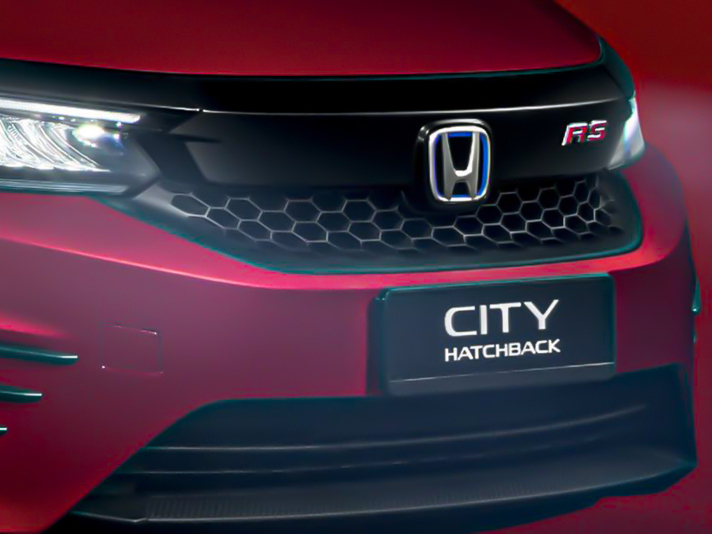
Is Honda City Hatchback Still Worth Buying in 2025?
JohnJun 26, 2025

High Cost-Performance: Is the Honda City Hatchback Worth Buying? Dynamic Experience Revealed!
AshleySep 23, 2024
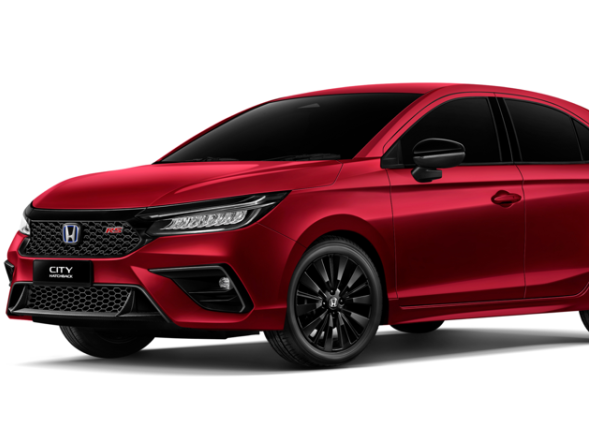
From Jazz to City Hatchback: The Perfect Transformation of Honda Hatchback
LienJun 4, 2024

Honda City e HEV Hatchback RS: Fuel Efficiency
AshleyMay 4, 2024
View More







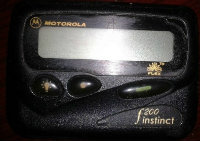




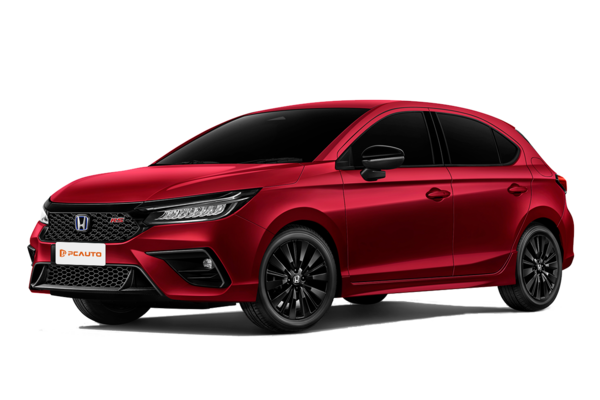
 Cars
Cars
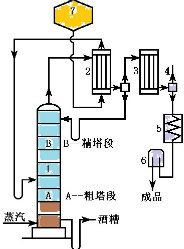



Pros
Cons